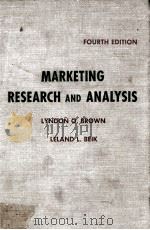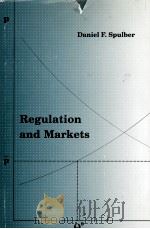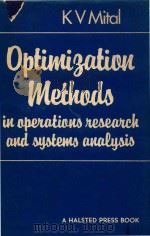《Market Research and Analysis》
| 作者 | 编者 |
|---|---|
| 出版 | The Ronald Press Company |
| 参考页数 | 487 |
| 出版时间 | 1937(求助前请核对) 目录预览 |
| ISBN号 | 无 — 求助条款 |
| PDF编号 | 812546788(仅供预览,未存储实际文件) |
| 求助格式 | 扫描PDF(若分多册发行,每次仅能受理1册) |

CHAPTER 1INTRODUCTION3
The Rise of Market Research and Analysis6
Some Weaknesses in Present Market Research and Analysis Practice8
General Plan of the Book10
Market Research and Market Analysis12
CHAPTER 2TYPES AND USES OF MARKET RESEARCH AND ANALYSIS16
National Market Analysis and Wholesale or Retail Market Analysis16
Industrial Market Analysis and Consumer Market Analysis17
Qualitative and Quantitative Analysis18
Types of Market Analysis19
Qualitative Market Analysis19
Quantitative Market Analysis31
Product Analysis33
Market Trend Analysis39
Sales Analysis43
Dealer Analysis47
Advertising and Sales Promotion Analysis49
Other Types of Market Analyses57
CHAPTER 3SCIENTIFIC METHOD58
What is Scientific Method59
The Basic Methods of Science63
The Historical Method63
The Inductive Method66
The Deductive Method68
The Analytical Method71
The Experimental Method73
The General Techniques of Special Scientific Fields75
Statistics75
Accounting76
Engineering79
Psychology80
Sociology82
CHAPTER 4BASIC MARKET ANALYSIS METHODS84
The Survey Method85
Factual Surveys86
Opinion Surveys87
Interpretive Surveys89
The Observational Method96
The Experimental Method in Market Analysis98
The Accuracy of Market Analysis Methods104
The Alternative Use of Market Analysis Methods109
The Combination of Methods110
CHAPTER 5MARKET ANALYSIS PROCEDURE112
The Situation Analysis117
The Informal Investigation120
Planning the Analysis123
Gathering Data131
Tabulation and Analysis133
Interpretation140
Presentation of the Results141
Follow-Up142
CHAPTER 6THE SITUATION ANALYSIS144
How the Situation Analysis is Made146
Distinction Between the Situation Analysis and the Data-Gathering Step147
The Use of Standard Outlines148
Nature of Information Obtained in the Situation Analysis149
The Product149
The Company,Industry,and Competition153
The Market155
Channels of Distribution156
The Sales Organization160
Advertising and Sales Promotion162
CHAPTER 7THE INFORMAL INVESTIGATION165
Purpose165
How the Informal Investigation is Made167
Informal Consumer Interviews173
Informal Dealer Interviews180
Informal Key Interviews188
CHAPTER 8PLANNING THE INVESTIGATION—DETERMINING PURPOSES;TYPES AND SOURCES OF DATA194
Determining the Purposes of the Analysis194
Steps in Stating the Purposes of the Investigation196
Determining the Types and Sources of Data199
How to Determine the Types and Sources of Data to Be Used202
CHAPTER 9PLANNING THE INVESTIGATION—PREPARATION OF THE FORMS TO BE USED IN GATHERING DATA207
Types of Questionnaires208
The Elements of the Questionnaire214
General Rules for Constructing Questionnaires222
Preparation of Forms for Observations and Experiments243
CHAPTER 10PLANNING THE INVESTIGATION—PLANNING THE SAMPLE;DETERMINING OPERATING PLANS AND COSTS247
Planning the Sample247
The General Theory of Sampling248
The Major and Minor Universe;Gross and Sub-Samples250
The Difficulty of Obtaining Random Samples252
Determining the Nature of the Major Universe254
Determining the Nature of the Minor Universes256
Determining the Number of Interviews Necessary for Reliability257
Determining the Distribution of Interviews Necessary for Proportionality260
Limitations of Statistical Formulae and Tables Used in Planning and Testing Samples for a Market Analysis261
Effect of the Size of a Sample on Its Soundness264
Determining Operating Plans and Costs265
CHAPTER 11GATHERING DATA268
Gathering Secondary Data268
The Sources of Secondary Data268
Appraising Secondary Data273
Gathering Primary Data279
The Test Investigation279
Gathering Data by Mail Questionnaires280
Gathering Data by Personal Interviews282
Supervision282
Selecting Investigators284
Training Field Investigators287
Instructions to Persons Gathering Data289
Interviews with Executives and Other Important Persons294
Checking the Field Force295
Handling the Observational Work296
Handling Experiments298
CHAPTER 12TABULATION AND ANALYSIS—EDITING DATA AND TESTING THE SAMPLE303
Editing Data303
Testing the Validity of the Sample310
Testing for Reliability311
The Cumulative Frequency Method312
The Group Rotation Method319
Calculation of the Probable Error of the Sample323
Testing for Proportionality325
Adjustment for Proportionality327
CHAPTER 13 TABULATION AND ANALYSIS—TABULATING AND DRAWING STATISTICAL CONCLUSIONS330
Tabulation331
Rules for Obtaining Accuracy in Tabulation334
Obtaining the Most Significant Meaning from the Data340
Machine versus Hand Tabulation342
Advantages of Machine Tabulation342
Disadvantages of Machine Tabulation345
Drawing Statistical Conclusions347
CHAPTER 14 INTERPRETATION354
How Far the Market Analyst Should Go in Interpreting His Findings into Business Policy354
The Problem of Interpretation356
Making Logical Interpretations357
Standards for Interpretation359
Making Policy Interpretations That Will Be Followed366
CHAPTER 15PRESENTATION OF THE RESULTS373
Importance of the Reports373
Primary Principles of Presentation374
The Technical Report376
The Popular Report379
Forms for Popular Reports380
How to Write a Popular Report383
How to Make a Popular Presentation Dramatic386
Standards in Graphic Presentation393
Checking the Reports399
The Follow-Up400
CHAPTER 16QUANTITATIVE MARKET ANALYSIS:ITS USES AND LIMITATIONS402
Importance of Quantitative Analysis403
The Uses of Quantitative Analysis403
Total Sales Quotas404
Territorial Sales Quotas404
Quotas for Individuals405
Boundaries of Sales Territories406
Concentration of Sales Efforts407
Distribution of Sales Force407
Distribution of Advertising408
Appraisal of Efficiency410
Limitations of Quantitative Market Analysis412
CHAPTER 17QUANTITATIVE MARKET ANALYSIS—METHODS OF QUANTITATIVE ANALYSIS421
The Direct Data Method421
The Corollary Data Method426
The Single Index Method427
The Batten,Barton,Durstine and Osborn Index430
The Curtis Index431
The Crowell Index432
The International Magazine Company Index433
The McCann Index434
The Retail Sales Index435
The Arbitrary Factors Method437
The Family Budget Method441
The Consumption Rate Method442
The Multiple Correlation Method444
CHAPTER 18THE ROLE OF MARKET ANALYSIS IN BUSINESS AND ECONOMICS449
The Part Market Analysis Plays in the Theory and Practice of Marketing449
Some Economic Aspects of Market Analysis454
The Organization of Market Analysis Work456
The Individual Firm456
Organizations Specializing in Market Analysis459
Advertising Agency Research460
Research by Advertising Media and Other Organizations462
The Limitations of Market Research and Analysis464
SELECTED READINGS467
INDEX475
1937《Market Research and Analysis》由于是年代较久的资料都绝版了,几乎不可能购买到实物。如果大家为了学习确实需要,可向博主求助其电子版PDF文件(由 1937 The Ronald Press Company 出版的版本) 。对合法合规的求助,我会当即受理并将下载地址发送给你。
高度相关资料
-

- Rethinking the process of operational research and systems analysis
- 1984 Pergamon Press
-

- RETHINKING TEH PORCESS OF OPERATIONAL RESEARCH AND SYSTEMS ANALYSIS
- 1984 PERGAMON PR
-

- Marketing and Market Research
- 1967 CROSBY LOCKWOOD & SON LTD
-

- RESEARCH METHODS AND DATA ANALYSIS IN THE SOCIAL SCIENCES
- 1996 HARPERCOLLINS COLLEGE PUBLISHERS
-

- MARKET ANALYSIS
- 1982
提示:百度云已更名为百度网盘(百度盘),天翼云盘、微盘下载地址……暂未提供。➥ PDF文字可复制化或转WORD









